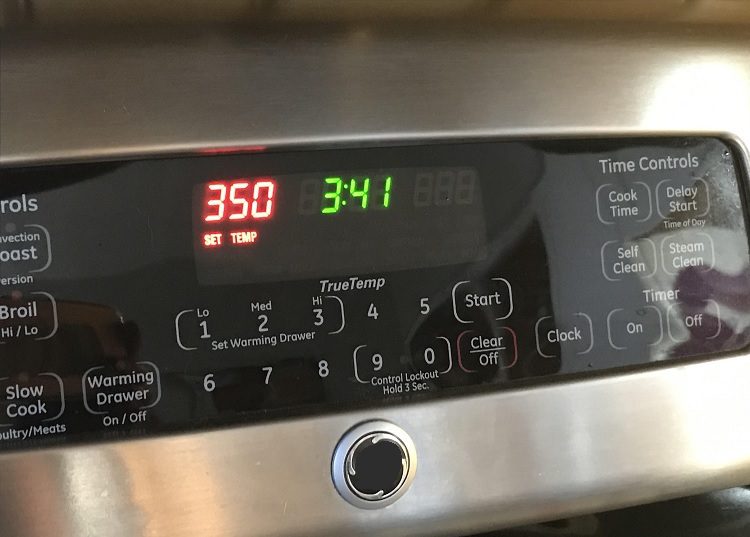Why is 350 degrees such a common oven temperature?
January 13, 2021 by DarcieArguably the most common oven temperature for baked goods like cookies, cakes, and enriched breads is 350°F (~180°C). For most of us, it’s the default setting on our oven’s control panel. How did bakers land on this as the ‘magic number’ for so many items? Speaking with Vox, award-wining Pastry Chef Michael Laiskonis provides the answers.

The key criteria for determining baking temperature is balancing the interplay between the food’s moisture content and the Maillard reaction, says Chef Laiskonis. The Maillard reaction occurs when proteins and sugars are transformed by heat to produce the golden brown colors and toasty flavors we all love. You might think that this reaction occurs around 350°F, but that is not the case. It actually happens at much lower temperatures – between 230 to 240°F – so how did 350 become the standard?
The answer echoes the children’s fairy tale Goldilocks and the Three Bears. Baking too long at a low temperature dries out baked goods, which will lead to rock hard cookies and tough cakes. Bumping the heat too high results in burning and scorching, also far from ideal. A moderate oven heat of 350°F balances this divide rather well, allowing for good color and flavor development without drying or burning.
This temperature also falls in the middle of the temperature range for a ‘moderate’ oven (325 to 375°F), which is how many recipes referred to oven temperature prior to precise thermostatically controlled heating mechanisms. In the days when heating with wood or coal was common, recipe writers generally referred to cool, moderate, or quick (fast) ovens.
Experienced bakers will tweak oven temperature to better control the outcomes of their favorite cakes, cookies, and other baked goods. But if you aren’t sure of what temperature you should use for a recipe, 350°F is a dependable fallback position.
Categories
- All Posts (6940)
- Antipasto (2135)
- Author Articles (247)
- Book News (935)
- Cookbook Giveaways (983)
- Cookbook Lovers (257)
- Cooking Tips (109)
- Culinary News (299)
- Food Biz People (552)
- Food Online (791)
- Holidays & Celebrations (272)
- New Cookbooks (149)
- Recipes (1500)
- Shelf Life With Susie (231)
- What's New on EYB (133)
Archives
Latest Comments
- eliza on What foods do you look forward to the most for each season?
- kmwyman on Rooza by Nadiya Hussain – Cookbook Review and Giveaway
- Maryd8822 on The Golden Wok – Cookbook Giveaway
- Dendav on Danube Cookbook Review and Giveaway
- sanfrannative on Rooza by Nadiya Hussain – Cookbook Review and Giveaway
- darty on Danube Cookbook Review and Giveaway
- Atroyer7 on Danube Cookbook Review and Giveaway
- demomcook on What foods do you look forward to the most for each season?
- demomcook on Danube Cookbook Review and Giveaway
- Darcie on How cookbooks can help build resilience